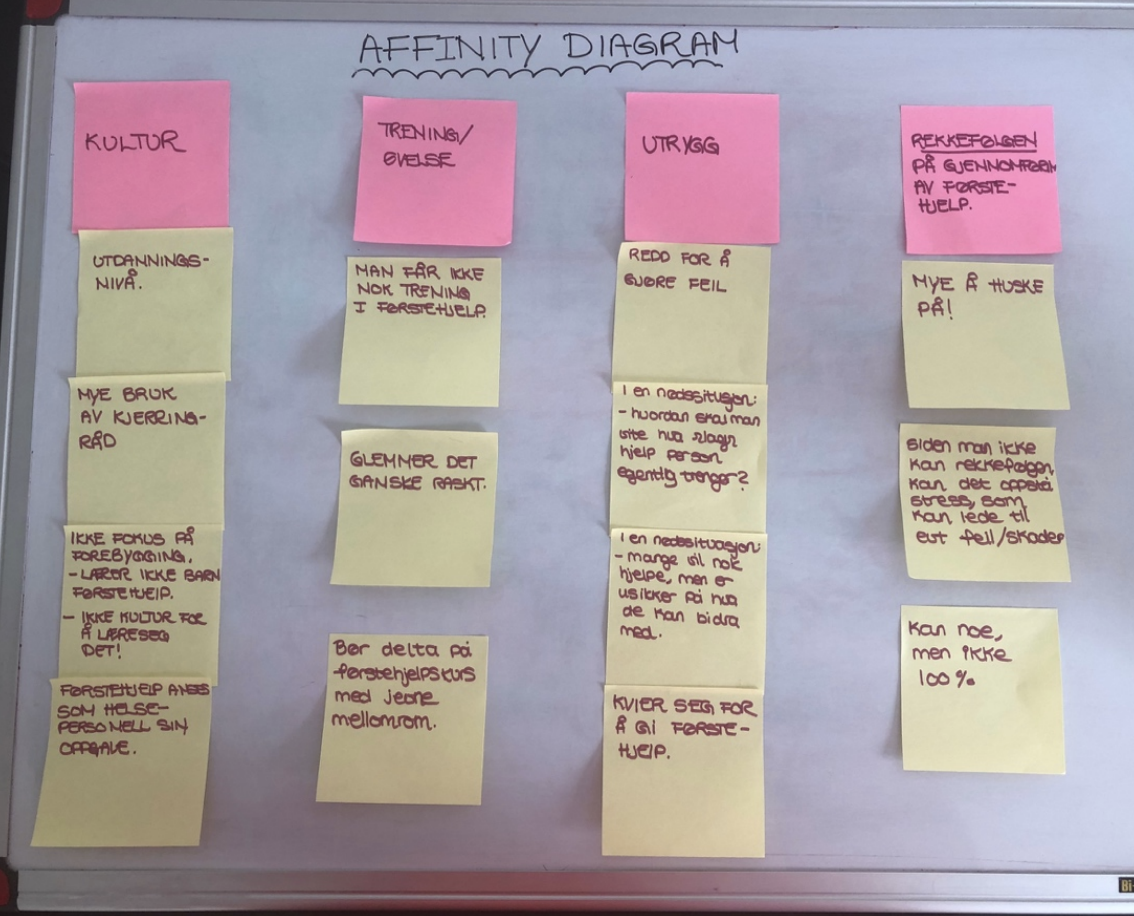first aid at 1-1-3
Your Lifesaving Skills Simplified!
OvervieW
ROLES:
Product design
(Interaction design)
TOOLS USED:
TINKERCAD/
TRELLO/
ARDUINO
First aid is essential knowledge everyone should have, but in emergencies, many feel unsure, wasting valuable time.
"Førstehjelp på 1-1-3" focuses on streamlining the training process while aiming to provide clear, essential information about first aid.
about
A major challenge was simplifying the complex first aid process for users with limited prior knowledge. We needed to present the information clearly to build their confidence and competence, while also navigating resource limitations due to COVID-19.
Challenge
To eliminate the uncertainty with first aid, and make the process more efficient.
Goal
the process
defining our problem statement
The project was part of the "Use-Oriented Design" course at the University of Oslo, focusing on "Welfare Technology." We chose "First Aid" as our theme, inspired by a group member's prior training.
We hypothesized that individuals with immigrant backgrounds might have less first aid knowledge, which was unfortunately confirmed through data collection.
This led us to narrow our focus and define our problem statement as:
How can we improve first aid knowledge among Afghan immigrant parents?
Initial brainstorming session on first aid
discovering requirements
Data Collection
We conducted three semi-structured interviews.
1. Afghan Parents: To understand their first aid experiences.
2. Operating Nurse: To gain professional insights on first aid.
3. Red Cross Volunteer: To explore ways to simplify first aid training.
Users highlighted that the numerous steps in first aid can be overwhelming, which led us to seek simpler solutions.
In addition to this we also used observation and own experience. From this, we created a mind map, which would later form the foundation of our solution:
aNaLYSIS
After each interview, we transcribed the recordings and applied inter-coder reliability to enhance the validity of our qualitative analysis. We employed open coding to analyze the data, and based on our findings, we created an affinity diagram.
Our findings showed four recurring themes: culture, training/practice, uncertainty, the sequence of performing first aid.
requirements
After identifying the connections between the various themes, we concluded with the following requirements.
1. Increase first aid knowledge: Our users were motivated to learn from the start.
2. Practice life-saving first aid: Users had only theoretical knowledge from Afghanistan and had never practiced it.
3. Simplify first aid training: Make it as easy as possible.
PROTOTYPING
iteration 1
First aid board game
iteration 2
First aid “starter pack”
iteration 3: concept set and further prototyping
"Traffic lights" function as a checklist, guiding you step-by-step as you follow the instructions on the card.
iteration 4: FIRST aID aT 1-1-3
Our final product concept: A box containing cards that guide you through the process using lights, along with a Rescue Anne doll for practicing CPR. It's not meant for emergencies but to enhance your first aid knowledge and skills for when/if they occur.
usability testing
After each iteration, we gathered user feedback to refine our design. This feedback prompted us to drop the board game concept, as it didn’t align with our target group’s culture, and it reassured us about the usability of the prototype. For instance, while we were concerned that pressing a button for each step might be cumbersome, users actually viewed it as a satisfying way to check off tasks, similar to completing a checklist. Such insights were crucial in helping us finalize our artifact.
what was created
Our final solution consists of three booklets containing information on:
1. Assessing an unconscious person
2. CPR
3. Recovery position
how to: recovery position
Follow the cards to perform the recovery position. The button will help you track each step. You’re finished when all the lights are lit.
follow the beat to cpr
The Rescue Anne Doll is marked with an X to indicate where to perform compressions. The heart light and sound indicate the compression rhythm, while the green light shows when to deliver breaths. You can end the process whenever you choose.
reflections and takeaways
Finding solutions to issues that many people are unaware of is challenging. It was valuable to apply theoretical methods in practice and experience the design process firsthand. A successful first design group project!








